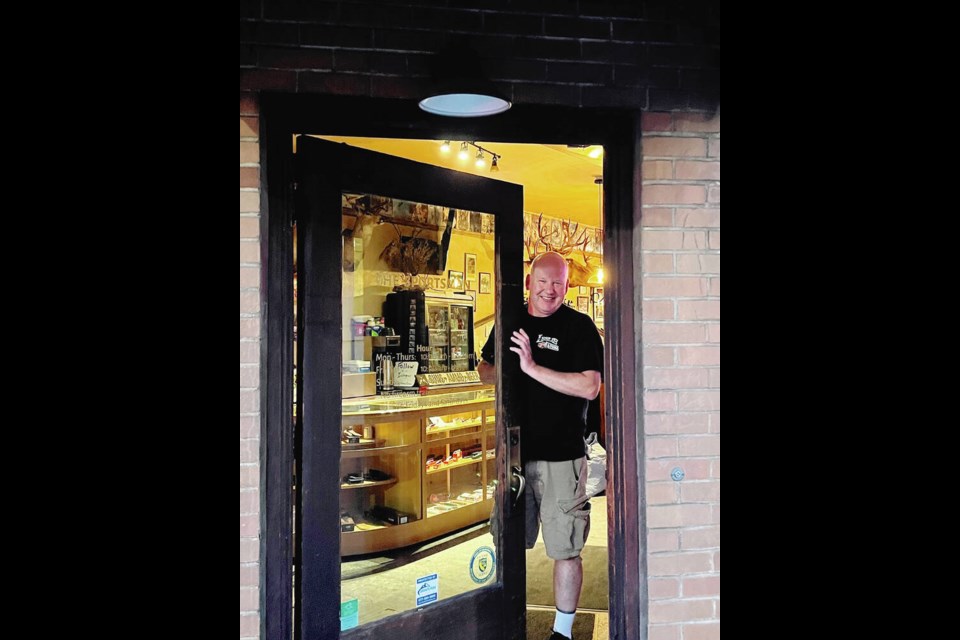Although the heyday of gold mining in Tuolumne County in the Sierra Nevada foothills of central California ended more than a century ago, you can still find flecks of gold and even gold nuggets in Tuolumne River and streams.
The county — whose name rhymes with “follow me” — is not only a good place for recreational gold panning, but the best spot to learn about the California gold rush, since many of its original gold-rush towns still exist.
Places like Sonora, Jamestown and Columbia aren’t ghost towns but living testaments to the past, with buildings that date back to the mid-1800s, when the California gold rush was booming, and are now home to modern one-of-a-kind shops, pubs and eateries.
On a recent visit to Tuolumne County, 214 kilometres east of San Francisco, I visited all three communities and got a taste of what life was like for gold-rush-era prospectors in these quaint but thriving former gold-rush towns.
In Columbia, considered the best-preserved gold-rush town in California, I wandered down the wooden boardwalks of Main Street, popping in and out of brick or wood-frame buildings, including an old-time general store, an allegedly haunted hotel, the local saloon and a popular bakery, all seemingly frozen in time.
Columbia State Historic Park is one of the most interesting “living museums” I’ve visited, with folks dressed in period costumes re-enacting one of America’s most interesting eras.
Columbia also has the state’s largest collection of gold-rush-era structures, including California’s oldest two-storey red-brick school, built in 1860. It was saved by 1950s-era school children who raised $57,000 in nickels and pennies to help pay for its restoration.
My home base for my three-day visit was Sonora, once considered the rowdiest of the region’s gold-rush towns. Instead of staying downtown, which state Highway 108 runs through, I stayed just 10 minutes outside of town on the edge of an apple orchard at The Ranch House, a comfortable, small farmhouse advertised on VRBO.
In that peaceful country location, I frequently saw a flock of wild turkeys roaming in the front yard, but was still able to quickly access the county’s only incorporated city, chockablock with shopping and dining venues in old buildings.
Downtown Sonora even has a store called The Sportsman that has held both a liquor and a firearms licence for the past 76 years, which means visitors can order a beer at the bar while buying a gun.
“You couldn’t get something like this today. It’s been like this since 1947 and back then nobody cared,” said Steve Kame, who has worked for years at the store. Still, he added, there’s a minimum wait time of 10 days before you can walk out of The Sportsman with your newly purchased gun.
Near Sonora and Columbia is Jamestown, known as Gateway to the Mother Lode, where gold was first discovered in Tuolumne County in 1849. It’s also home to Railtown 1897 State Historic Park, with a large collection of steam and diesel locomotives, a big draw for railroad enthusiasts.
According to born-and-bred Sonora city Coun. Ann Segerstrom, Sierra Rail started in 1897 to carry people up and down the valley between Modesto and Santa Fe County, but after the introduction of cars, the trains were no longer deemed necessary.
“The steam locomotives stayed here physically because movie crews from Hollywood kept showing up in the late ‘20s to film here. Then all the wild west shows in the 1960s,” she says.
The park is now described as “Hollywood’s most popular railroad film location,” thanks to the more than 200 movies and TV productions filmed here, such as Little House on the Prairie and High Noon.
When Segerstrom told me they also filmed the opening scene of Petticoat Junction here, I knew I had to visit to see the iconic water tower from this TV show of my childhood.
Forget panning for gold, this was my Eureka moment in Tuolumne County. How could I ever forget the opening scene of Petticoat Junction, which ran from 1963 to 1970, with three sisters skinny-dipping in the old wooden water tank with their dog.
There’s a spot for selfies near the park entrance depicting the moment when the sisters are grabbing for frilly skirts hanging over the side of the tank as the steam engine whistle blows, signalling the approach of a train.
I was able to talk a worker into letting me cross the railroad tracks to get a close-up photograph of the water tank, since it was October, when the vintage steam trains weren’t operating for the public. (The trains operate April through September, providing a 45-minute ride through part of the Sierra foothills.)
The tank at Railtown 1897 is a replica, but it was built in the exact spot where the original wooden water tank from Petticoat Junction stood. It has a roof to protect it from the elements.
Tuolumne County is also important as a gateway to Yosemite National Park — half of Yosemite National Park, which became America’s third national park when it was designated in 1890, is within the county.
I spent a full day in Yosemite National Park, mostly photographing the granite cliffs of Half Dome, El Capitan and Bridalveil Falls, and exploring around Yosemite Valley, before relaxing at the new Rush Creek Lodge & Spa, near the park’s west entrance. Although the resort has been offering accommodation since 2016, the spa opened in 2021.
There’s an easy drive around Yosemite Valley, but the adventurous can also take one of its many hiking trails in the spectacular landscape that photographer Ansel Adams captured in striking black and white images, after joining the Sierra Club in 1919. If you go, be sure to visit the Ansel Adams Gallery in Yosemite.
Kim Pemberton was hosted by Visit Tuolumne County, which did not review or approve this story. Follow her on Instagram at kimstravelogue.



